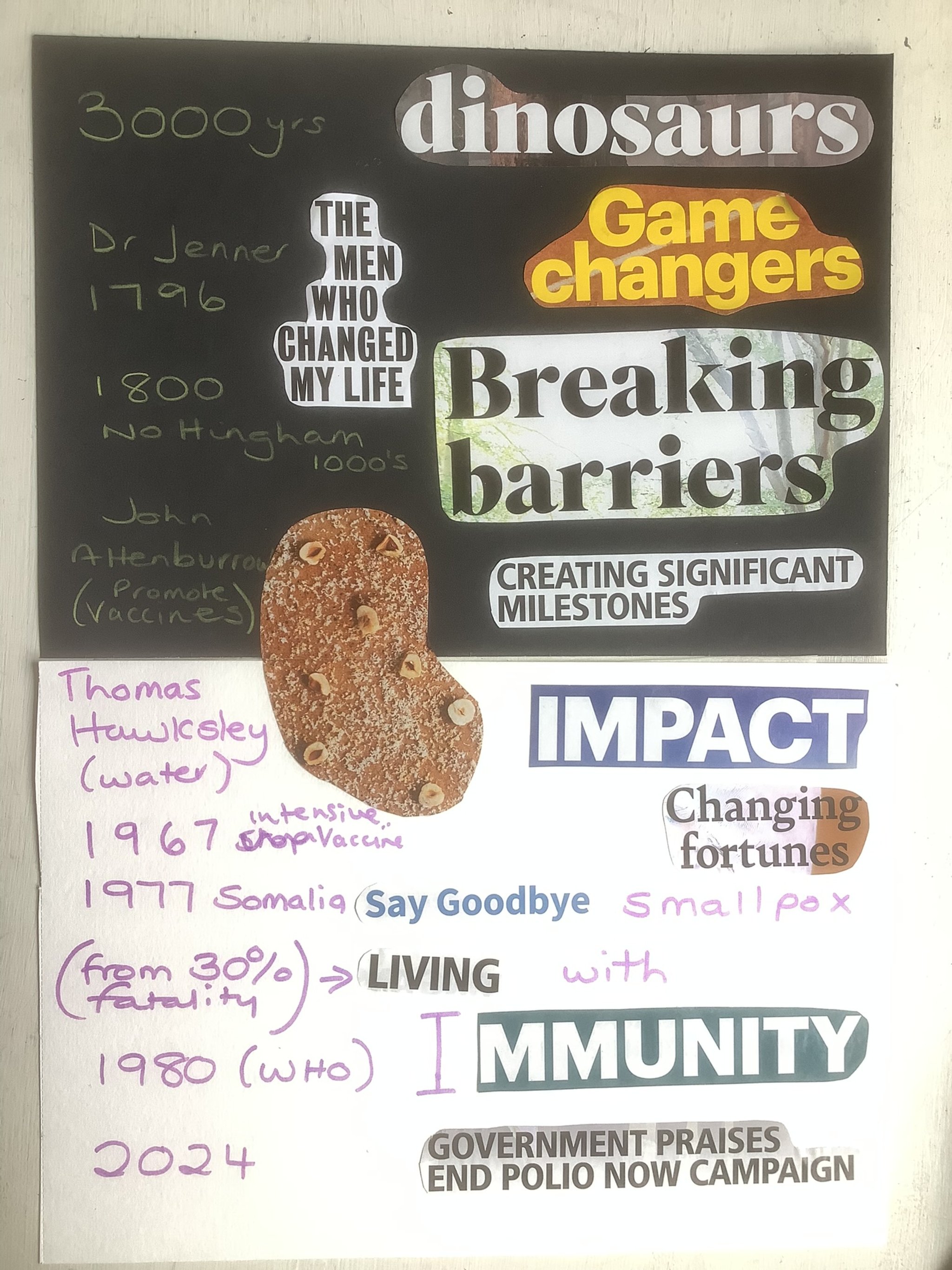
HERITAGE EXHIBITION - people of st nic’s
As part of the repairs to the tower – made possible through a grant from The National Lottery Heritage Fund – expert Rebecca Luxon led a heritage workshop to find out more about some of the historic people connected to St Nic’s. After learning about these historical figures, participants used different media to create an exhibition.
Abel Collin (1653 – 1705) – benefactor
Abel Collin is buried in St Nic’s churchyard. He was a modest man who lived by his Christian faith. He left money in his will for the poor of Nottingham, and to build almshouses.
Vanessa O wanted to thank Abel Collin for this legacy:
Rachel B imagined some archived social media posts:
Tom Booth – (1677 – 1752) – notorious deer poacher
Tom Booth, a curious local character, was born and lived in Nottingham, and is buried in St Nic’s graveyard. He was a whitesmith by day, and a deer poacher by night.
Patrick S created this collage.
“I wanted to show that we have sympathies with the game keeper and the poacher. I’ve depicted Tom as a young man. Tom Booth’s wife didn’t want her details on the same grave as his – you can see the blanks on the gravestone today - so she must have been a strong woman.”
Fanny (1760 – 1846) and Peggy (1758 – 1848) Mettam, sisters
A stone plaque in St Nic’s chancel commemorates these sisters, who lived in Castle Gate. Their father Thomas Mettam was a linen draper and mercer. The sisters enjoyed an upper middle-class lifestyle.
Karen J reflected on the modesty of the sisters, who were born over 250 years ago:
Emily R produced this collage:
“I wanted to convey the partnership of these two sisters. A wonderful sister is better than a mediocre man.”
David N stumbled upon diary entries from Fanny Mettam’s journal:
Sarah S produced this collage, conveying the Georgian lifestyle of these ladies.
Wendy S produced this painting of the sisters in their finery. Perhaps they were on their way to a sandwich party with their friend Abigail Gawthern, the diarist, who lived nearby.
John Attenburrow (1756 – 1843) – vaccination pioneer
John Attenburrow introduced the smallpox vaccine to Nottingham, vaccinating hundreds of poor people free of charge at his surgery on Beastmarket Hill. He led the way by first vaccinating his own son, giving others the confidence to trust the vaccine. His gravestone is in St Nic’s graveyard.
Stephanie S created this artwork:
“I wanted to convey John Attenburrow’s legacy to healthcare in Nottingham. He was surgeon at Nottingham’s general hospital for over 60 years.”
Steph wanted to convey the timeline for eradicating disease:
“Smallpox was recorded over 3,000 years ago, and it took pioneers like John Attenburrow to eradicate the disease. Other people have been important, such as the water engineer, Thomas Hawksley. There are more diseases still to eradicate, such as polio.”
Chris N produced this artwork:
“I wanted to contrast the deadly beauty of the smallpox virus, compared with the pioneering work of the man who brought the vaccine to Nottingham.”
John S reflects on Mr Attenburrow’s character, looking at his career, family and legacy.
John Francis Townend (1850 – 1945) – ambitious family man
John Francis Townend dedicated a stained glass window at St Nic’s to thank God for the safe return of two of his sons from the first world war.
Anne C was inspired by the stained glass window to paint this tree of life:
“I’ve recently visited Eyam, where in the 17th century the villagers quarantined to prevent the spread of the plague. This is commemorated in stained glass in the church there. The first world war was a kind of plague which killed indiscriminately, and J F Townend’s commemoration of gratitude inspired me to paint this symbol of life.”
Martyn P was inspired to write this poem about heritage and legacy.

















